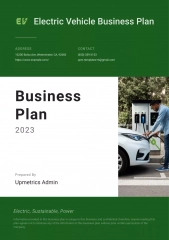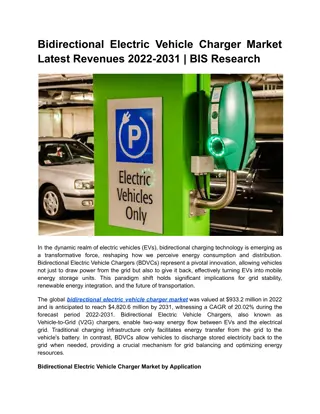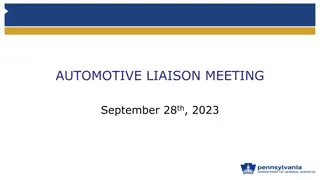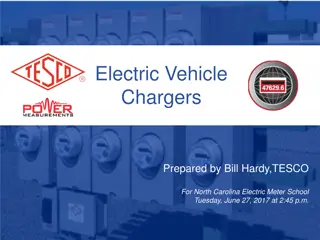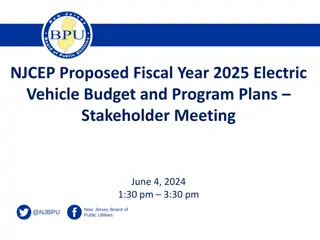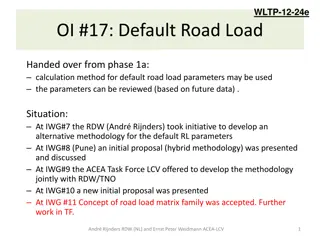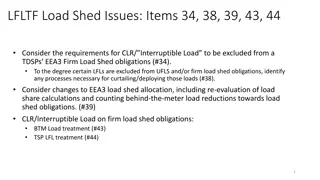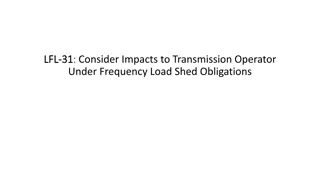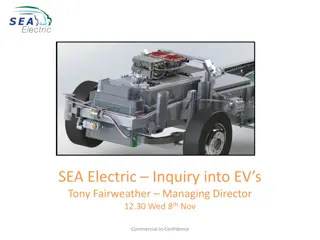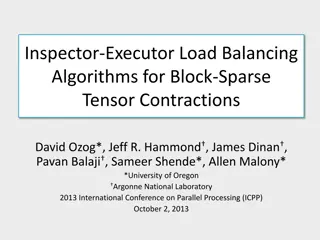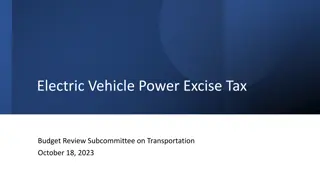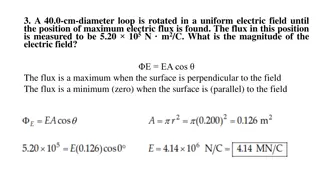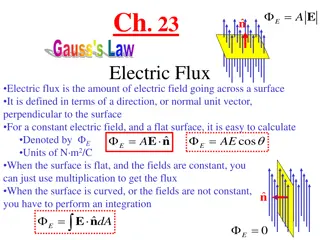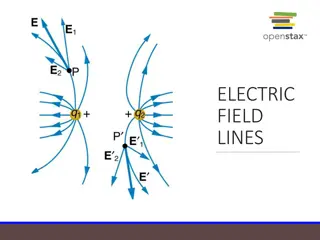Electric Vehicle Load Shape Analysis
In this analysis, explore the grid impacts of worst and best-case EV charging scenarios, separate from the adopted cases. Dive into hourly load shapes, modeling inputs, and summer day load shapes to assess potential system impacts. Understand the distribution of EV load across peak summer periods and its consequences on the grid system.
Download Presentation

Please find below an Image/Link to download the presentation.
The content on the website is provided AS IS for your information and personal use only. It may not be sold, licensed, or shared on other websites without obtaining consent from the author.If you encounter any issues during the download, it is possible that the publisher has removed the file from their server.
You are allowed to download the files provided on this website for personal or commercial use, subject to the condition that they are used lawfully. All files are the property of their respective owners.
The content on the website is provided AS IS for your information and personal use only. It may not be sold, licensed, or shared on other websites without obtaining consent from the author.
E N D
Presentation Transcript
Demand Analysis Working Group Electric Vehicle Load Shape Design Alex Lonsdale, Energy Analyst Date: 7/22/20
Order of Presentation Background Worst-Case Scenario 1. Definition 2. Modelling 3. Design Questions Best-Case Scenario 1. Definition 2. Modelling 3. Design Questions Closing 2
Background Stakeholders and Commissioners were interested in examining the grid impacts of worst and best-case EV charging scenarios. These exploratory scenarios are external to the adopted low, mid, and high cases. Exploratory case load shapes were developed separate from the EV Infrastructure Load model (presented at the April DAWG). CEC s EV Infrastructure Load model simulates the potential effects of Time-of-use rates on EV charging. Currently, the model generates load shapes specific to IOU forecasting zones. Exploratory scenario load shapes will be less granular and look at statewide transportation electricity demand. 3
Worst-Case Scenario: Definition Question: What are the potential grid system impacts if all EVs were to charge during hours of peak summer demand? Definition: An hourly load shape scenario in which all vehicles charge during the grid s on-peak period (4:00-7:00 pm). Ultimately, this exploratory scenario assesses grid system impact if EV load were distributed across the peak summer period. 4
Worst-Case Scenario Schematic IEPR 2020 CAISO Hourly Demand Forecast Daily Charging Electricity Consumption Worst-Case Scenario IEPR 2020 TEDF Worst Case Summer Day Load Shape 5
Worst-Case Scenario: Modelling Inputs The IEPR 2020 hourly demand forecast will be used to develop an average summer day load shape, specific to calendar year 2031. Preliminary load shapes using IEPR 2019 data is shown below. 6
Worst-Case Scenario: Modelling Inputs Daily Charge Consumption: Daily electricity consumption is derived from the Electric Vehicle Infrastructure Load model s Base Load Shape and Personal Vehicle Charging Location shares inputs. Base Load Shape : defines the percent of charging specific to weekday and weekend days for each vehicle category. Personal Vehicle Charging Location shares: defines the percent of PEV electricity consumption from single family, multi-family, and destination charge locations. Use of this input enables residential and commercial sector specific output. IEPR 2020 Transportation Electricity Demand Forecast: The transportation electricity demand forecast results for 2031 will serve as a baseline input for determining the magnitude of daily electricity consumption from all vehicle categories. 7
Worst-Case Scenario: Design Questions Currently, the worst-case modelling strategy focuses on developing a load shape specific to a summer weekday and weekend day. Would stakeholders find similar interests in expanding modelling to include the winter season? Load distribution across the on peak period will vary by assumptions made regarding charging capabilities. Are there specific time durations, charging assumptions, or charge profiles that stakeholders would be interested in applying to this scenario? Example: A potential worst-case instance may assume vehicles charge behavior align with DCFC capabilities. 8
Best-Case Scenario: Definition Question: If EV charging was managed with the goal of reducing GHG emissions, what would be the estimated impacts to the grid and corresponding GHG emission reductions? Definition: A load shape scenario in which vehicle categories with flexible charging behavior charge during hours of lower GHG emission intensity factors. By aligning charging to hours with lower grid emission factors, EVs may optimize renewable energy generation thereby reducing GHG emissions from the grid. 9
Best-Case Scenario Schematic Grid Emission Factors Daily Charging Electricity Consumption Best-Case Scenario IEPR 2020 TEDF IEPR 2020 CAISO Hourly Demand Forecast Statewide 8760 Load shapes 10
Best-Case Scenario: Modelling Inputs Mid-Case 2030 Average Grid Emission Intensity Factors: Units: Metric Ton CO2/ MWh. HOURS 0 1 2 3 4 5 6 7 8 9 10 11 12 13 14 15 16 17 18 19 20 21 22 23 1 0.186 0.195 0.199 0.200 0.197 0.186 0.169 0.162 0.127 0.079 0.064 0.060 0.059 0.064 0.073 0.135 0.166 0.145 0.141 0.146 0.153 0.162 0.174 0.181 M o n t h 2 0.159 0.166 0.172 0.172 0.168 0.156 0.142 0.136 0.080 0.050 0.043 0.041 0.041 0.042 0.046 0.070 0.140 0.130 0.119 0.122 0.129 0.136 0.147 0.153 3 0.138 0.145 0.148 0.146 0.139 0.124 0.117 0.120 0.073 0.045 0.040 0.039 0.039 0.039 0.040 0.043 0.080 0.110 0.097 0.101 0.106 0.117 0.126 0.133 4 0.104 0.108 0.110 0.108 0.099 0.092 0.089 0.083 0.047 0.039 0.036 0.036 0.036 0.036 0.037 0.038 0.047 0.074 0.068 0.081 0.080 0.082 0.090 0.098 5 0.088 0.093 0.095 0.093 0.088 0.084 0.081 0.067 0.042 0.037 0.036 0.036 0.036 0.036 0.035 0.038 0.045 0.055 0.058 0.084 0.085 0.076 0.077 0.084 6 0.094 0.101 0.105 0.107 0.106 0.101 0.090 0.064 0.045 0.039 0.038 0.037 0.037 0.037 0.038 0.041 0.046 0.057 0.065 0.087 0.101 0.088 0.088 0.095 7 0.161 0.168 0.173 0.174 0.172 0.169 0.160 0.139 0.089 0.070 0.066 0.064 0.064 0.065 0.071 0.084 0.098 0.105 0.115 0.132 0.140 0.146 0.153 0.159 8 0.210 0.219 0.224 0.226 0.221 0.213 0.207 0.188 0.102 0.076 0.070 0.069 0.070 0.072 0.079 0.095 0.123 0.128 0.134 0.147 0.155 0.165 0.186 0.199 9 0.217 0.226 0.229 0.228 0.222 0.211 0.207 0.202 0.118 0.079 0.072 0.069 0.069 0.071 0.081 0.107 0.141 0.141 0.147 0.160 0.174 0.188 0.199 0.208 10 0.208 0.215 0.217 0.217 0.210 0.198 0.189 0.190 0.122 0.069 0.057 0.054 0.054 0.056 0.062 0.094 0.141 0.133 0.141 0.152 0.165 0.180 0.189 0.199 11 0.198 0.204 0.208 0.207 0.205 0.196 0.182 0.169 0.096 0.065 0.058 0.056 0.057 0.062 0.079 0.143 0.163 0.144 0.147 0.154 0.161 0.170 0.182 0.189 12 0.211 0.218 0.222 0.223 0.221 0.213 0.198 0.188 0.136 0.088 0.075 0.071 0.071 0.078 0.094 0.167 0.179 0.159 0.159 0.163 0.171 0.180 0.193 0.202 Source: CEC staff, Planning and Modelling Unit. 11
Best-Case Scenario: Modelling Inputs Daily Charging Electricity Consumption: Consistent with use in the worst-case scenario. Based on inputs from the Electric Vehicle Infrastructure Load model. IEPR 2020 CED CAISO Hourly Demand Forecast: Utilized as baseline grid system electricity consumption. EV load profiles will be summed with the CAISO forecast. IEPR 2020 Transportation Electricity Demand Forecast: Same as the worst-case use. The transportation electricity demand forecast for 2031 will serve as a baseline input for determining the magnitude of daily electricity demand from all vehicle categories. 12
Best-Case Scenario: Design Questions PEVs are the focus with respect to load shifting. What are stakeholder's perspectives on adjustable commercial load? Are there specific MD-HD categories? Using emission factors as a basis for load distribution enables GHG calculations. What interest is there comparing GHG projections to baseline scenarios? Are stakeholders interested in expanding the scope of this exploratory scenario from 2031 to all forecast years? 13
Closing Thank you for participating in today s DAWG! Comments and or questions are encouraged as we continue to develop these exploratory scenarios. Contact Information: Email: Alexander.Lonsdale@energy.ca.gov Phone: 916-651-0465 14


